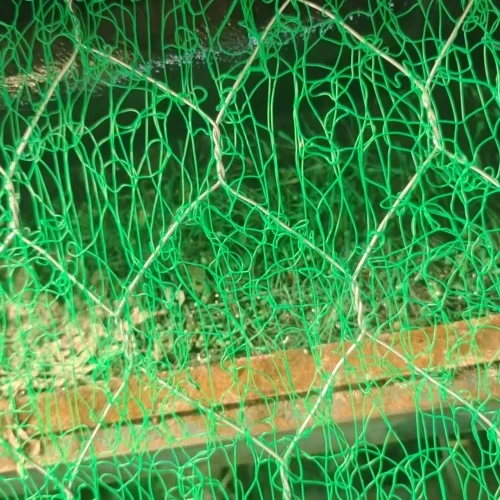Geomat is a type of erosion control product made from biodegradable or synthetic materials, often used in soil stabilization and to prevent soil erosion. It consists of a mat-like structure, typically made from coir, jute, or synthetic fibers, designed to protect the soil surface. Geomats are commonly used in areas where soil is prone to erosion due to wind, water, or other environmental factors. These mats are typically placed on slopes, hillsides, riverbanks, or around construction sites where soil erosion is a concern. Geomats serve several important functions, including reducing the velocity of water runoff, protecting seeds and plants, and promoting vegetation growth. They are designed to act as a protective cover that helps the soil retain moisture while allowing for the growth of grass or other vegetation. In addition to preventing erosion, geomats help in the stabilization of slopes and banks, minimizing the risk of landslides or the loss of valuable topsoil. They are environmentally friendly, as many geomats are made from natural, biodegradable materials that break down over time, reducing their environmental impact. Overall, geomats are essential tools in erosion control, soil stabilization, and promoting sustainable land use practices.
What Are the Key Benefits of Using Geomat?
Geomat offers numerous benefits, making it a preferred solution for erosion control and soil stabilization. One of the main advantages is its ability to effectively prevent soil erosion. Geomats help reduce the speed of water runoff, which is a primary cause of soil erosion, and stabilize the soil surface. They protect vulnerable areas like slopes, riverbanks, and construction sites from erosion, reducing the need for costly repairs or interventions. Geomats also provide a protective layer for seeds and plants, allowing vegetation to grow and further stabilizing the soil. The growth of vegetation on the geomat adds an additional layer of natural protection, enhancing the mat's effectiveness. Additionally, geomats help to retain moisture in the soil, which is beneficial for plant growth, particularly in dry or arid environments. Another key benefit is that geomats are made from environmentally friendly materials, such as coir, jute, or biodegradable polymers, making them sustainable and safe for the environment. They are also relatively easy to install, reducing labor and time costs compared to other methods of erosion control. Overall, geomats provide an efficient, cost-effective, and environmentally friendly solution to combat soil erosion and promote vegetation growth, ensuring long-term soil stability.
How Does Geomat Compare to Other Erosion Control Methods?
Geomat offers distinct advantages over other erosion control methods, particularly in terms of environmental sustainability and ease of use. Compared to traditional methods like concrete or riprap, geomats are more eco-friendly, as they are often made from biodegradable materials that break down over time without harming the environment. This contrasts with concrete, which can disrupt natural ecosystems and is more difficult to install and remove. Geomats also promote natural vegetation growth, which can further stabilize the soil, while concrete or riprap do not support plant life and require more maintenance. Another alternative to geomats is the use of erosion control blankets or nets, which can also provide temporary protection for the soil. While both products are effective, geomats tend to offer better long-term benefits due to their ability to foster vegetation growth and improve soil health over time. Unlike sandbags or temporary barriers, geomats provide a more permanent solution for soil erosion control, as they create a stable foundation for plant roots, which can continue to stabilize the soil even after the geomat decomposes. In comparison to chemical-based erosion control solutions, geomats are a safer option, as they do not introduce harmful chemicals into the soil. Overall, geomats offer a more sustainable, cost-effective, and long-lasting solution compared to other erosion control methods, especially when long-term soil stabilization and environmental impact are considered.








